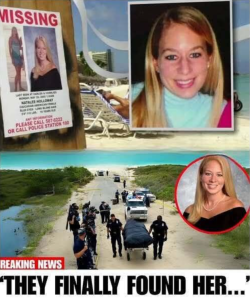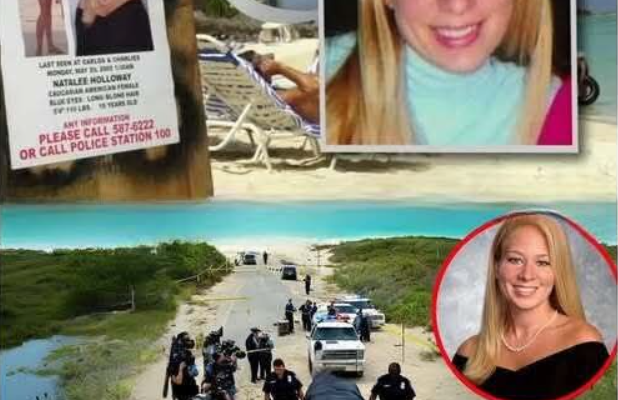20 Years Later, the Truth About Natalee Holloway’s Fate Finally Emerges—And It’s More Devastating Than Anyone Imagined
For two decades, the name Natalee Holloway haunted America’s collective memory—a symbol of innocence lost, a mystery that refused to fade, and a mother’s relentless pursuit of truth. Her disappearance in 2005 during a high school graduation trip to Aruba sparked an international media frenzy, ignited debates about travel safety, and inspired countless documentaries, podcasts, and books. But behind the headlines was a grieving family, suspended in limbo, yearning for answers.
Now, twenty years later, the truth has finally emerged. And it’s darker than anyone dared to imagine.
A Night That Changed Everything
Natalee Holloway was 18 years old when she boarded a plane to Aruba with her classmates from Mountain Brook High School in Alabama. She was bright, ambitious, and full of promise—a 4.0 student with plans to study pre-med. The trip was meant to be a celebration of youth and achievement. But on the night of May 30, 2005, Natalee vanished.
She was last seen leaving a nightclub with a group of local young men, including Dutch teenager Joran van der Sloot. What followed was a chaotic and deeply flawed investigation. Aruban authorities struggled to manage the media attention and public pressure. Conflicting reports, false leads, and questionable interrogations clouded the case. Despite intense scrutiny, no charges were filed, and Natalee’s body was never found.
Her mother, Beth Holloway, became a fixture in the media—pleading for help, demanding accountability, and refusing to let her daughter’s story be forgotten.
The Long Silence
Years passed. Joran van der Sloot remained the prime suspect but evaded justice. He was later convicted in Peru for the murder of another young woman, Stephany Flores, in 2010. The parallels between the two cases were chilling, but Natalee’s fate remained a mystery.
Beth Holloway continued her search, supported by private investigators and legal advocates. The case became a touchstone for discussions about missing persons, international law, and the vulnerability of young travelers abroad. Yet, despite the attention, the truth remained elusive.
Until now.
The Confession That Shattered Hope
In 2023, while serving time in Peru, Joran van der Sloot was extradited to the United States on charges of extortion and wire fraud related to the Holloway case. As part of a plea deal, he finally confessed to Natalee’s murder.
His account was chilling. He described how, after Natalee rejected his sexual advances, he bludgeoned her with a cinder block and disposed of her body in the ocean. The confession was graphic, unrepentant, and horrifying. It confirmed the worst fears of those who had held out hope that Natalee might still be alive.
Beth Holloway responded with heartbreak. “We finally know the truth. But nothing can bring Natalee back,” she said. The confession brought closure, but not peace. Natalee’s remains were never recovered. There would be no proper burial, no final goodbye.
A Mother’s Unyielding Fight
Beth Holloway’s journey is one of extraordinary resilience. For twenty years, she fought for answers, challenged governments, and kept her daughter’s story alive. Her advocacy transformed how missing persons cases are handled, especially those involving Americans abroad.
She became a voice for other families facing similar tragedies, offering support and demanding reform. Her efforts led to increased awareness, improved embassy protocols, and greater scrutiny of international investigations.
But the cost was immense. Beth endured public scrutiny, personal loss, and emotional exhaustion. Her strength became a beacon—but it was forged in unimaginable pain.
The Cultural Impact
Natalee Holloway’s disappearance changed America. It exposed the fragility of safety in paradise, the limits of justice across borders, and the power of media to shape public perception. Her story became a cautionary tale, a rallying cry, and a cultural obsession.
True crime podcasts dissected every detail. Documentaries revisited the case year after year. The public followed every twist, every rumor, every false lead. Natalee became more than a person—she became a symbol.
But behind the symbol was a real girl. A daughter. A friend. A life cut short.
The Ripple Effect
The impact of Natalee’s case continues to reverberate. In 2025, the disappearance of Sudiksha Konanki, a University of Pittsburgh student in the Dominican Republic, drew immediate comparisons. The eerie similarities—young woman, spring break, Caribbean beach, mysterious man—rekindled fears and reminded the public of Natalee’s fate.
Beth Holloway offered support to Konanki’s family, urging authorities to act swiftly and thoroughly. “Surely they are checking cameras from hotel, gas stations, traffic lights, store fronts and wherever they had dinner,” she said. Her words carried the weight of experience—and a warning not to repeat the mistakes of the past.
Justice, Finally
Joran van der Sloot’s confession marked the end of a chapter. He will serve his sentence, but the damage he caused cannot be undone. His admission brought clarity, but also devastation. The truth was not redemptive—it was brutal.
Still, for the Holloway family, certainty is a form of justice. After twenty years of torment, they finally know what happened. They can begin to grieve without the torment of unanswered questions.
A Legacy of Strength
Natalee Holloway’s legacy is not defined by her death, but by the movement her story inspired. Her case reshaped how missing persons are investigated, how families are supported, and how media covers tragedy. It sparked reforms, inspired advocacy, and reminded the world of the human cost behind headlines.
Beth Holloway’s courage turned personal loss into public change. Her fight ensured that Natalee’s story would not be forgotten—and that others might be spared similar pain.


